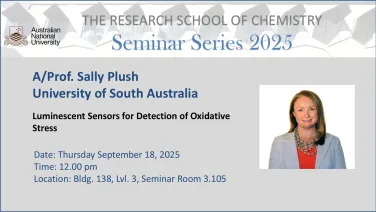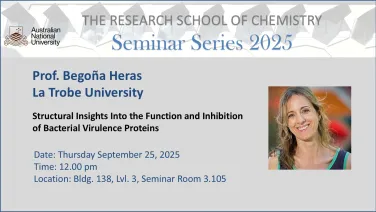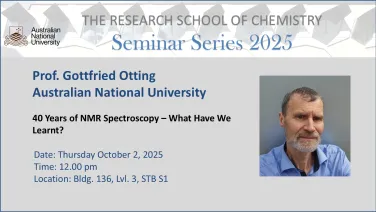RSC School Seminar - Dr. Jack Chen (AUT)
Title: Applying Concepts from Nature for the design of Dynamic Catalyst Systems
Event series
Content navigation
Description

Title: Applying Concepts from Nature for the design of Dynamic Catalyst Systems
Speaker: Dr. Jack Chen
Cooperative interactions between precisely positioned functional groups in an active site are one of the hallmarks of natural enzymes.Taking this queue from biological systems, chemists have devised numerous strategies for the pre-organization of functional groups to allow the formation of multiple contacts with a bound substrate. Recently, we demonstrated that such cooperative interactions can also be achieved within self-assembled vesicles. In this talk, I will discuss how self-assembly offers a dynamism that allows the incorporation of stimuli-responsiveness into these systems and even life-like properties.

Current challenges in this research area include the design of structures where its formation and destruction can be reversibly coupled to an external stimulus (e.g. chemical fuel or light), systems that operate out of equilibrium, and the demonstration of communication between components within a chemical network (e.g. via feedback loops). The incorporation of responsive components within chemical networks can lead to new systems/materials that are self-generating, self-repairing and with the potential to display adaptive and evolutive properties.
Biography
Jack received his PhD in Chemistry from the University of Auckland in 2010, working with Prof. Margaret Brimble. After a postdoctoral stay with Prof. Varinder Aggarwal at the University of Bristol, UK (2011-2014), he was introduced to supramolecular chemistry in the group of Prof. Leonard Prins in Padova, Italy (2014-2016). In 2016, he commenced his independent career in the School of Science at Auckland University of Technology.
Jack’s research group is interested in the way molecules self-organise into functional architectures. A key feature of their research is the utilisation of cooperative effects - where multiple functional groups work together to exhibit properties not observed in the original building blocks. Dynamic systems featuring cooperativity allow the construction of chemical systems that respond to chemical fuels, light and other applied stimuli - offering the potential to exhibit 'intelligent' and adaptive properties.



